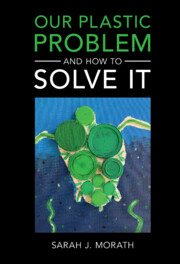Book contents
- Our Plastic Problem and How to Solve It
- Our Plastic Problem and How to Solve It
- Copyright page
- Contents
- Acknowledgments
- Abbreviations
- Introduction
- Part I Plastic in the Environment
- 1 The Proliferation of Plastic
- 2 Measuring Plastic
- 3 Plastic as a Pollutant
- Part II Multimodal Approaches to Solving Our Plastic Problem
- Part III Innovation and Design
- Index
2 - Measuring Plastic
“You Can’t Manage What You Don’t Measure”
from Part I - Plastic in the Environment
Published online by Cambridge University Press: 17 March 2022
- Our Plastic Problem and How to Solve It
- Our Plastic Problem and How to Solve It
- Copyright page
- Contents
- Acknowledgments
- Abbreviations
- Introduction
- Part I Plastic in the Environment
- 1 The Proliferation of Plastic
- 2 Measuring Plastic
- 3 Plastic as a Pollutant
- Part II Multimodal Approaches to Solving Our Plastic Problem
- Part III Innovation and Design
- Index
Summary
Like the plastic industry, the study of plastic in the environment has evolved. A relatively new area of academic research, recent scientific studies look at the sources and pathways of plastic pollution, the identification of plastic “hotspots,” the categorization of plastic pollution, and plastic’s impact on habitat and species. One plastic expert noted in 2019 that “[i]n the last five years there has been more published research on plastics than in the previous 50 years.” And those who study plastic often have specialties in other areas such as hydrology, ecology, or chemistry. There are no “plastic scientists” yet. Chapter 2 highlights recent studies that have attempted to measure the amount and origins of plastic in our environment.
Quantifying the amount of plastic in the air, on land, and in our oceans is a difficult, but important part of our solving our plastic problem. This difficulty arises in part because of the numerous types and forms of plastic that exist. Plastic pollution includes discarded Styrofoam containers and fragments of bags, straws, and bottles that float down rivers and into the ocean. Plastic pollution also includes microplastics like microbeads from cosmetics that are washed down our drains and plastic resins (nurdles) that spill during manufacturing or transport. Some plastic is dense (e.g. acrylic) and can quickly sink to the bottom of a riverbed or ocean floor, while other plastic is light (e.g. polypropylene) and is dispersed by water currents.
In addition to having a variety of forms, plastic can also enter the environment in both accidental and intentional ways. In characterizing plastic pollution, researchers consider a variety of factors including the size and origin of the plastic as well as the physical and chemical properties of the plastic. Despite the many forms, compositions, and places in which plastic appears, scientists are attempting to measure plastic in the environment. Quantifying plastic pollution and understanding these classification systems are critical to understanding the problem and is essential to crafting viable and effective solutions.
Keywords
- Type
- Chapter
- Information
- Our Plastic Problem and How to Solve It , pp. 22 - 35Publisher: Cambridge University PressPrint publication year: 2022

